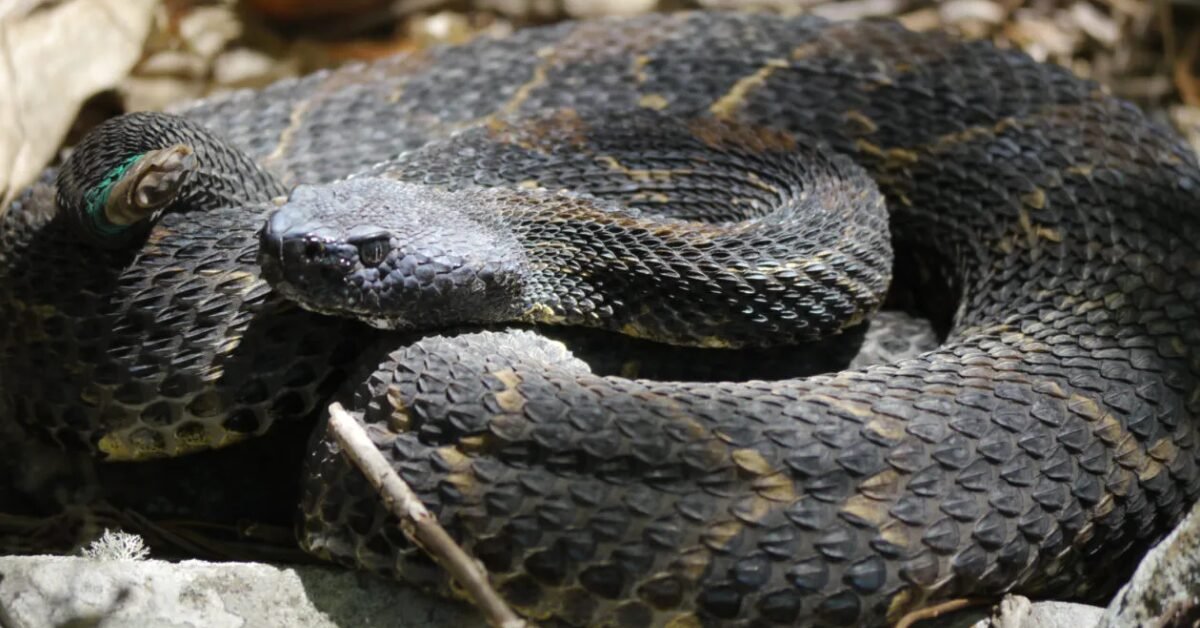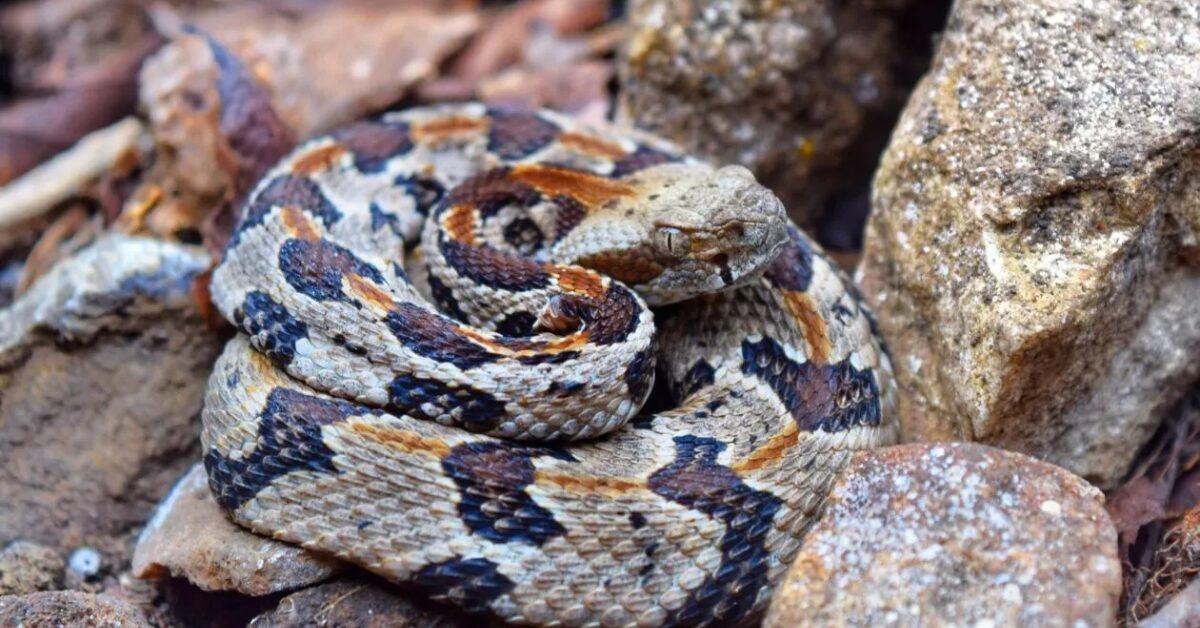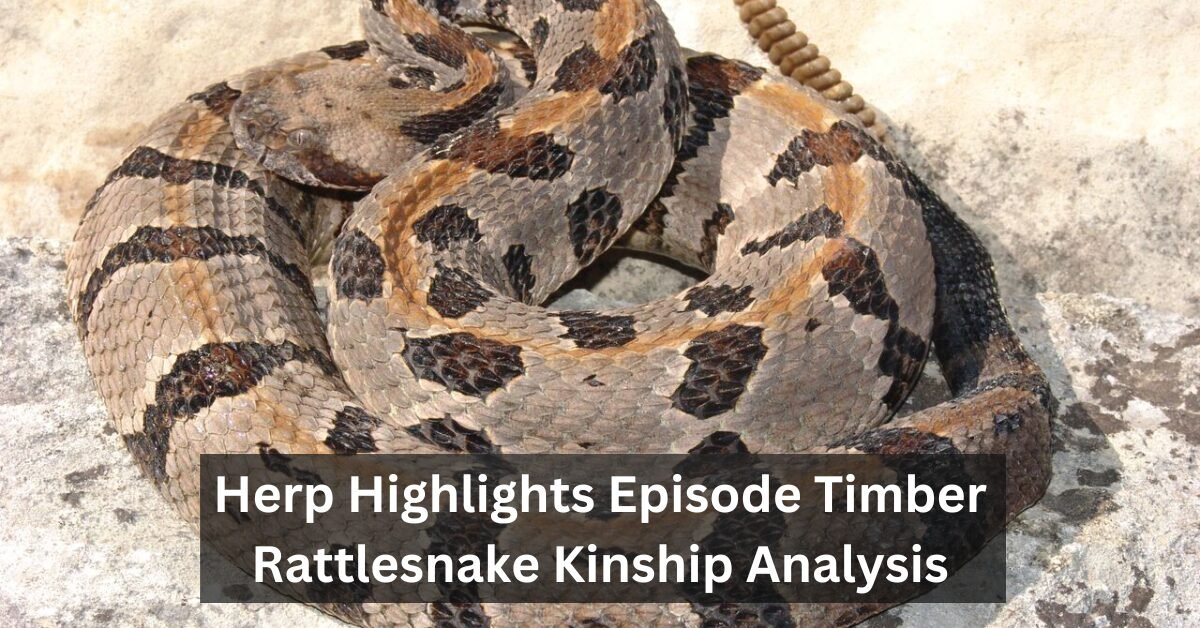The Herp Highlights Episode Timber Rattlesnake Kinship Analysis and one of its most intriguing episodes delve into the kinship analysis of timber rattlesnakes (Crotalus horridus). This episode explores groundbreaking research on how these venomous snakes form familial bonds, challenging the common belief that rattlesnakes are solitary creatures. Scientists uncover critical insights into their conservation by understanding their genetic relationships and social behaviors.
The Herp Highlights Episode Timber Rattlesnake Kinship Analysis sheds light on a fascinating aspect of snake behavior. Hosted by leading herpetologists, this podcast explores cutting-edge research that enhances our understanding of how timber rattlesnakes interact with their relatives. The discussion brings forward data-backed discoveries and expert opinions that reshape our perception of rattlesnake social structures.
Kinship analysis is an essential tool in wildlife conservation, providing insights into genetic diversity and population health. In this Herp Highlights Episode Timber Rattlesnake Kinship Analysis, researchers explain how studying familial connections among timber rattlesnakes helps in formulating effective conservation strategies. By preserving genetic diversity and protecting key habitats, conservationists can better safeguard these misunderstood reptiles.
Getting to Know Timber Rattlesnakes

Scientific Classification: Crotalus horridus
Timber rattlesnakes belong to the Crotalus genus and are scientifically known as Crotalus horridus. They are one of the most well-known rattlesnake species in North America, with a wide distribution across the Eastern United States, including the Appalachian Mountains and Midwest forests.
Physical Characteristics and Adaptations
Timber rattlesnakes are recognized for their robust bodies, distinctive dorsal patterns, and potent venom. Their heat-sensing pits help them detect prey, making them highly efficient predators. Unlike other snake species, timber rattlesnakes exhibit relatively calm behavior, preferring to rely on their camouflage rather than aggression when threatened.
Role in North American Ecosystems
As apex predators, timber rattlesnakes play a crucial role in maintaining ecological balance. By controlling rodent populations, they indirectly help prevent the spread of diseases such as Lyme disease. Their presence in forests and rocky hillsides contributes to a well-functioning ecosystem.
Understanding Kinship in Timber Rattlesnakes
What is Kinship in Biology?
Kinship in biology refers to the genetic relationship between individuals within a species. While kinship analysis is commonly used to study mammals and birds, applying this concept to reptiles—especially venomous snakes—is relatively new and revolutionary.
Groundbreaking Discoveries from Kinship Studies
The Herp Highlights Episode Timber Rattlesnake Kinship Analysis reveals groundbreaking findings that contradict traditional beliefs about snake behavior. Through genetic testing, researchers discovered that timber rattlesnakes often share dens and exhibit maternal care, indicating a higher level of social interaction than previously thought.
Insights from the Episode
The episode features insights from renowned scientists like Dr. Jane Mitchell and Dr. Michael Warren, who discuss the importance of kinship in understanding rattlesnake social structures. By using advanced DNA sequencing techniques, researchers have identified familial bonds among rattlesnakes, revealing a complex network of genetic relationships.
Social Behavior of Timber Rattlesnakes
Are Rattlesnakes Truly Solitary?
Contrary to popular belief, timber rattlesnakes are not entirely solitary. Studies, including those discussed in the Herp Highlights Episode Timber Rattlesnake Kinship Analysis, show that they form close associations with related individuals, particularly during denning and mating seasons.
Evidence of Social Bonds and Group Dynamics
Field observations and genetic analyses reveal that timber rattlesnakes display social behaviors, including communal denning and cooperative parental care. Mothers have been observed staying with their offspring for extended periods, providing protection and guidance.
The Role of Kinship in Mating and Denning
Kinship analysis helps researchers understand mating patterns and denning behaviors. Timber rattlesnakes often select den sites where they can remain close to their relatives, ensuring genetic continuity and survival advantages for their offspring.
Kinship Analysis: Methods and Techniques
DNA Sequencing and Genetic Markers
Scientists use DNA sequencing and genetic markers to determine kinship relationships among timber rattlesnakes. By analyzing genetic similarities, they can track lineage and understand familial connections within populations.
Field Observations and GPS Tracking
In addition to genetic studies, researchers employ GPS tracking to monitor snake movements and interactions. This method provides real-time data on how related snakes interact within their habitats.
Ethical and Non-Invasive Research Practices
The Herp Highlights Episode Timber Rattlesnake Kinship Analysis emphasizes the importance of ethical research practices. Scientists use non-invasive techniques such as shed skin sampling and observational studies to minimize stress on snake populations while gathering valuable data.
Conservation Implications of Kinship Analysis
How Kinship Studies Aid Conservation
Understanding kinship structures allows conservationists to identify critical habitats and breeding grounds that need protection. By preserving family units, conservation efforts can enhance population stability.
Challenges Faced by Timber Rattlesnakes
Timber rattlesnakes face numerous threats, including habitat destruction, human-wildlife conflict, and climate change. Conservationists are working to mitigate these issues through habitat restoration and public education.
Strategies for Protecting Rattlesnake Populations
Organizations such as the National Park Service, U.S. Fish and Wildlife Service, and the IUCN are actively involved in rattlesnake conservation. Strategies include legal protections, habitat preservation, and community awareness campaigns.
Expert Insights from the Episode
Key Takeaways from Guest Scientists
Dr. Jane Mitchell and Dr. Michael Warren highlight the significance of kinship analysis in reptile research. Their findings underscore the need for conservation initiatives that consider social structures within rattlesnake populations.
Bridging Science and Public Awareness
The Herp Highlights podcast plays a crucial role in educating the public about the importance of rattlesnake conservation. By dispelling myths and sharing scientific knowledge, the podcast fosters an appreciation for these misunderstood creatures.
Broader Implications of the Study

How Kinship Research Affects Other Reptiles
The methodologies used in timber rattlesnake kinship analysis can be applied to other reptile species, leading to broader conservation efforts for snakes, lizards, and turtles.
Changing Perceptions About Snakes
Public perception of rattlesnakes is often negative, leading to unnecessary killings and habitat destruction. The Herp Highlights Episode Timber Rattlesnake Kinship Analysis encourages listeners to view these snakes as vital components of the ecosystem rather than threats.
Future Directions in Herpetology Research
Kinship research opens new doors for herpetology, offering fresh perspectives on reptile behavior and conservation. Scientists are now exploring how kinship influences other aspects of snake life, such as migration and predator-prey dynamics.
Conclusion
The Herp Highlights Episode Timber Rattlesnake Kinship Analysis reveals that these snakes are more social than previously believed. Kinship studies provide valuable insights into their behavior, conservation, and ecological significance.
Timber rattlesnakes play a crucial role in maintaining ecosystem balance. Protecting them ensures biodiversity and healthy environments.
Public support is essential for rattlesnake conservation. By spreading awareness through podcasts, documentaries, and educational programs, we can foster a greater appreciation for these fascinating reptiles.
Frequently Asked Questions
What is the Herp Highlights Episode Timber Rattlesnake Kinship Analysis?
This episode explores groundbreaking research on the social structures of timber rattlesnakes, using genetic analysis to understand kinship bonds and their impact on behavior.
Why is kinship analysis important for timber rattlesnake conservation?
Kinship studies help scientists understand rattlesnake social behavior, aiding conservation efforts by identifying critical habitats and family groupings that need protection.
How do researchers conduct kinship analysis in rattlesnakes?
Scientists use DNA sequencing, genetic markers, and field observations to determine relatedness among rattlesnakes and track their movements in the wild.
Are timber rattlesnakes social animals?
While often considered solitary, research reveals that timber rattlesnakes form social bonds, particularly among related individuals during denning and maternal care.
What can the public do to help protect timber rattlesnakes?
Supporting conservation programs, spreading awareness about their ecological role, and advocating for habitat preservation can help protect timber rattlesnake populations.
Stay in touch to get more updates & alerts on Creative Released! Thank you


